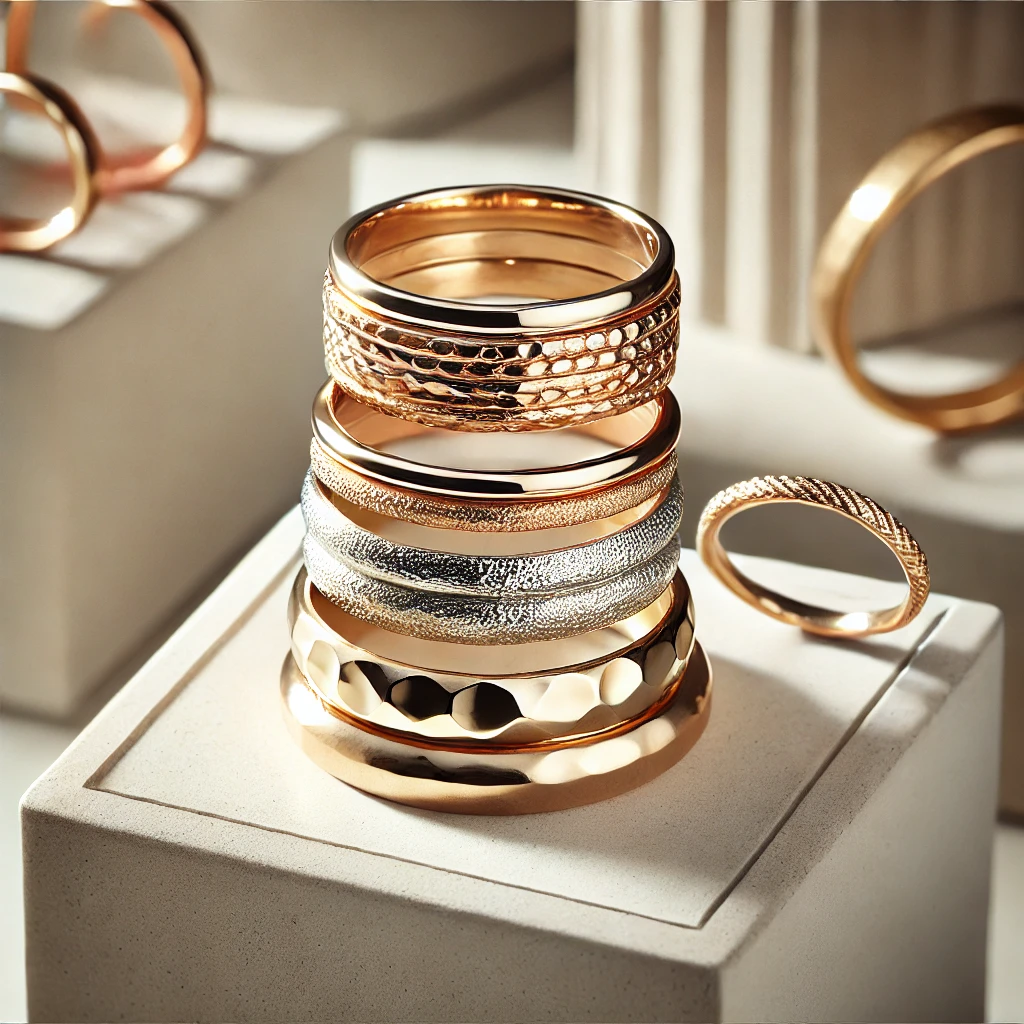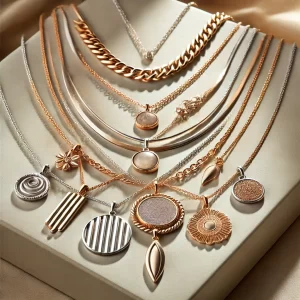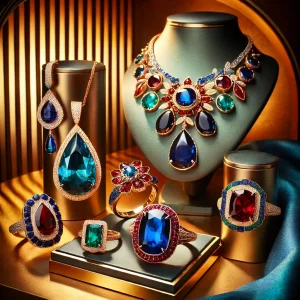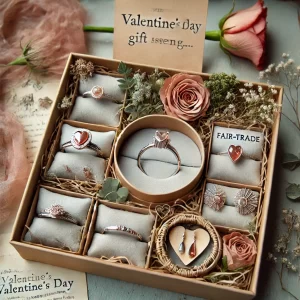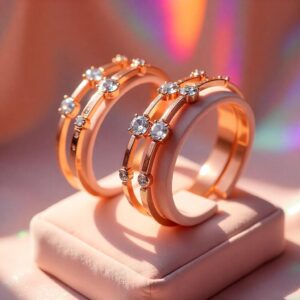Jewelry is more than just an accessory—it’s a statement of personal style, creativity, and individuality. One of the most exciting trends in 2025 is the art of mixing and matching jewelry to create unique, layered looks that express your personality and enhance your outfits. Gone are the days of sticking to one metal, one style, or even one gemstone. Today, it’s all about blending textures, colors, and materials to craft a cohesive yet dynamic ensemble.
In this guide, we’ll explore how to master the art of mixing and matching jewelry. From combining metals and layering necklaces to pairing bold and delicate pieces, you’ll learn everything you need to elevate your accessory game.
Why Mixing and Matching Jewelry is Trending
The beauty of mixing and matching jewelry lies in its versatility. This approach allows you to maximize the pieces you already own while giving you the freedom to experiment with new styles. It’s a way to breathe fresh life into your collection without feeling restricted by traditional rules.
Mixing and matching is also incredibly personal. Each combination tells a story, whether it’s a pairing of heirloom pieces with modern designs or a blend of vibrant gemstones with understated metals. In 2025, this trend celebrates individuality and creativity, encouraging wearers to step outside their comfort zones and try new things.
The Fundamentals of Mixing Metals
For years, the fashion world discouraged mixing metals, but 2025 has officially thrown that rulebook out the window. Today, combining gold, silver, and rose gold is not only acceptable but encouraged. The key to pulling off this look is balance.
Start by choosing one metal to dominate your ensemble. For instance, if you’re wearing a gold necklace, add a silver bracelet and a rose gold ring for contrast. Alternatively, use one statement piece, like a mixed-metal necklace, to tie the look together.
When layering necklaces or stacking bracelets, focus on creating a gradient effect. Pair darker metals like oxidized silver with brighter tones like yellow gold to add depth. Mixed-metal designs are particularly versatile, allowing you to bridge the gap between different styles and colors effortlessly.
Layering Necklaces for a Multi-Dimensional Look
Layering necklaces is an art that can instantly elevate your style. The trick is to mix lengths, textures, and pendant styles to create a look that feels cohesive yet dynamic. Start with a choker or short chain as your base and build outward with mid-length and long necklaces.
For example, pair a delicate gold choker with a silver pendant necklace and a long, beaded chain. Each piece should have its own unique charm while complementing the overall aesthetic. Incorporating a pop of color, such as a turquoise or garnet pendant, can also add visual interest and tie your jewelry into your outfit.
When layering necklaces, avoid overcrowding. Three to four pieces are usually enough to achieve a balanced and stylish effect. Let the necklaces follow the natural shape of your neckline for a polished finish.
Stacking Rings for a Bold Statement
Ring stacking is another way to experiment with mixing and matching jewelry. The goal is to create a collection of rings that feel harmonious while showcasing variety.
Start by selecting a theme—whether it’s a shared color palette, a combination of metals, or a focus on gemstone accents. For example, you could stack a rose gold band with a silver ring featuring a turquoise stone and a dainty gold midi ring. Mixing textured bands with smooth ones adds another layer of depth to your look.
For a minimalist approach, stick to thin, delicate bands. If you prefer a bolder style, incorporate chunkier rings or statement pieces. Remember, your hands are an extension of your personality, so don’t be afraid to let your creativity shine through.
Pairing Bold and Delicate Pieces
One of the most exciting aspects of mixing and matching jewelry is the ability to play with contrasts. Pairing bold statement pieces with delicate, understated designs creates a dynamic balance that draws the eye without feeling overwhelming.
For instance, combine a chunky chain necklace with small hoop earrings or pair a large cocktail ring with a stack of dainty bands. This approach allows you to highlight standout pieces while keeping the overall look cohesive.
The key to success is proportion. If your bold piece is particularly striking—like an oversized necklace or dramatic earrings—keep the rest of your jewelry simple to avoid competing elements.
Incorporating Gemstones into Your Mix
Gemstones are a fantastic way to add color and personality to your jewelry ensemble. When mixing gemstones, consider the color wheel to find complementary or contrasting hues that work well together.
For a harmonious look, stick to gemstones within the same color family, such as pairing emeralds with peridots. For a bolder statement, combine contrasting colors like sapphire blue with citrine yellow. Gemstones also work beautifully with mixed-metal designs, creating a look that’s vibrant and cohesive.
Don’t forget to consider the symbolism behind gemstones. Pairing stones with different meanings can add a layer of depth and intention to your jewelry. For example, garnet’s passionate energy can be balanced by the calming properties of amethyst, creating a meaningful and stylish combination.
The Role of Texture and Shape
Texture and shape play a crucial role in the art of mixing and matching jewelry. Smooth metals, textured finishes, and geometric shapes can all work together to create an engaging and unique look.
For example, combine a smooth gold cuff bracelet with a hammered silver bangle or pair a round pendant necklace with angular stud earrings. Playing with texture and shape adds visual interest, making your jewelry feel dynamic rather than flat.
Experiment with asymmetry as well. Wearing mismatched earrings or stacking rings of different widths can add an edgy and contemporary feel to your ensemble.
Building a Versatile Jewelry Collection
To master mixing and matching, it helps to have a versatile jewelry collection. Invest in staple pieces like gold hoops, silver bangles, and gemstone studs that can be paired with trendier items. Having a mix of classic and statement designs ensures you’re ready for any occasion.
Keep an eye out for multi-functional pieces, like necklaces that can be worn at different lengths or rings that stack seamlessly. These versatile items make it easier to experiment with your look without needing a massive collection.
Styling Tips for Everyday Wear vs. Special Occasions
The way you mix and match jewelry can vary depending on the setting. For everyday wear, simplicity is key. Stick to a few layered necklaces or a mix of bracelets that complement your casual outfit.
For special occasions, don’t be afraid to go all out. Layer multiple necklaces with varying textures, combine bold and delicate pieces, and incorporate vibrant gemstones for a show-stopping look. The key is to let your jewelry reflect the mood of the event while staying true to your personal style.
Conclusion
Mixing and matching jewelry is more than a trend—it’s an art form that allows you to express your individuality and creativity. By blending metals, layering necklaces, stacking rings, and playing with textures and gemstones, you can craft unique looks that are as dynamic as they are stylish.
The beauty of this approach lies in its versatility. Whether you’re dressing for a casual outing, a day at the office, or a glamorous evening event, the right combination of jewelry can elevate your look and tell your story.
Embrace the freedom and creativity of mixing and matching jewelry in 2025. Let your accessories reflect your personality, and enjoy the confidence that comes with wearing pieces that are uniquely yours.


